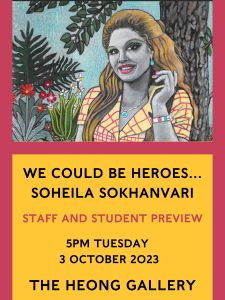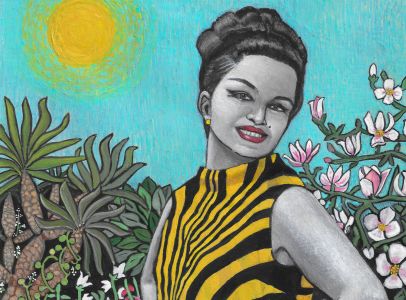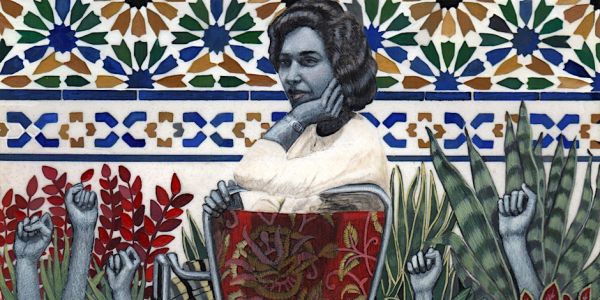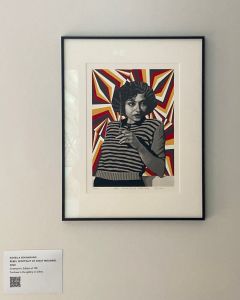SOHEILA SOKHANVARI: WE COULD BE HEROES...
SOHEILA SOKHANVARI: WE COULD BE HEROES...
5 October 2023 - 4 February 2024
Wednesday - Friday | 12pm - 5pm
Free Admission | No booking required
We Could Be Heroes… takes its name from the 1977 song by David Bowie. The song about two lovers separated by the Berlin Wall resonates with Sokhanvari’s relationship with Iran, separated from all she knew by the 1979 Islamic Revolution. Like the lovers reaching across a perilous border in search of each other, Sokhanvari reaches back to Iran before 1979, resurrecting icons and personal memories on the verge of being erased.
The exhibition could just as easily have been titled 'Women, Life, Freedom' after the rallying cry of the protests that erupted in Iran over the death in custody of Mahsa Amini. New works in Sokhanvari’s celebrated series of portraits of women performers silenced by the 1979 Revolution include portraits of singers Qamar-ol-Molouk Vaziri, Marzieh, Ezat Roohbakhsh and Pouran Shapoori; actor Shoorangiz Tabatabaee; and scientist Azar Andami. The paintings are made using egg tempera on vellum, in the mode of centuries of Iranian miniature painting, but confound expectations in their themes and scope.
Turning from the extraordinary to the everyday, the exhibition next alights upon Sokhanvari’s own family and friends, in paintings composed from photographs taken before 1979. Cousins giggle in their mini-dresses as they pose for pictures before a studio backdrop of cactus-filled desert scapes. Her mother looks at the viewer in a garden tiled in Islamic patterns, but with raised fists growing amongst the bedding plants. Portraits of Sokhanvari’s father, a fashion model and designer, join assemblages of other men, some forced into Western dress by Pahlavi decrees and others finding their voice in it. Colours and patterns were stripped out of men’s clothing after 1979 as new masculine ideals were imposed.
The third strand of the exhibition investigates the source of Iran’s twentieth-century love affair with authoritarianism and the uphill struggle for democracy and freedom - the vast reserves of crude oil discovered in 1908. The allure of this precious commodity has underpinned international intrigue, coups, regime changes, and state violence in Iran since its discovery. Layer upon layer of viscous crude oil build up to reveal snapshots from family holidays and popular culture in pre-1979 Iran. Once dry, the medium is odourless, settling into the sepia tones most often associated with nostalgia. Their medium rendered invisible in plain sight, the drawings speak to all of our complicity in the conflicts caused by our unquenchable thirst for crude oil.
With thanks to Kristin Hjellegjerde Gallery.
Soheila Sokhanvari limited edition prints now on sale
Now Available! Exclusive limited edition prints by Soheila Sokhanvari, exhibition merchandise, and more. Your purchases allow us to keep our education and public programming free.




